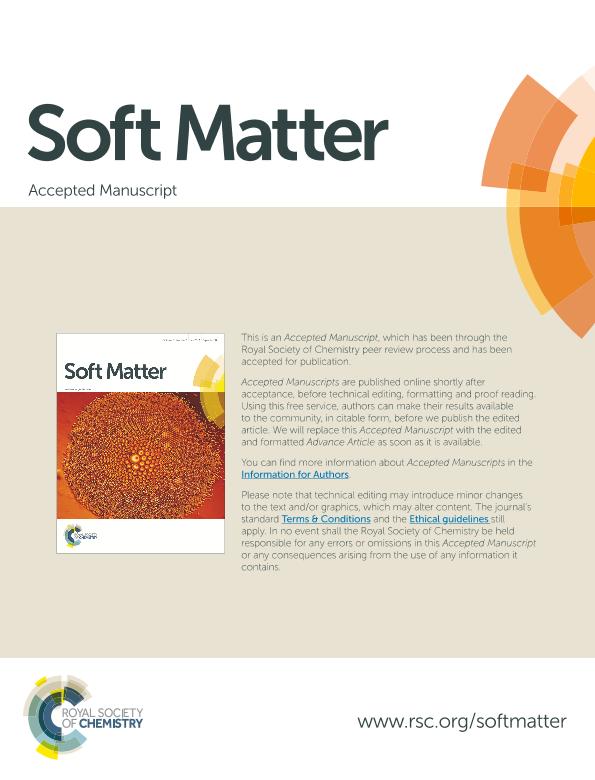Mostrar el registro sencillo del ítem
dc.contributor.author
Boschan, Alejandro

dc.contributor.author
Aguirre, Maria Alejandra

dc.contributor.author
Gauthier, G.
dc.date.available
2018-03-08T21:50:57Z
dc.date.issued
2015-05
dc.identifier.citation
Boschan, Alejandro; Aguirre, Maria Alejandra; Gauthier, G.; Suspension flow: Do particles act as mixers?; Royal Society of Chemistry; Soft Matter; 11; 17; 5-2015; 3367-3372
dc.identifier.issn
1744-683X
dc.identifier.uri
http://hdl.handle.net/11336/38349
dc.description.abstract
Recently, Roht et al. [J. Contam. Hydrol., 2013, 145, 10-16] observed that the presence of suspended non-Brownian macroscopic particles decreased the dispersivity of a passive solute, for a pressure-driven flow in a narrow parallel-plate channel at low Reynolds numbers. This result contradicts the idea that the streamline distortion caused by the random diffusive motion of the particles increases the dispersion and mixing of the solute. Therefore, to estimate the influence of this motion on the dispersivity of the solute, and investigate the origin of the reported decrease, we experimentally studied the probability density function (pdf) of the particle velocities, and spatio-temporal correlations, in the same experimental configuration. We observed that, as the mean suspension velocity exceeds a critical value, the pdf of the streamwise velocity of the particles markedly changes from a symmetric distribution to an asymmetric one strongly skewed to high velocities and with a peak of the most probable velocity close to the maximum velocity. The latter observations and the analysis of the suspension microstructure indicate that the observed decrease in the dispersivity of the solute is due to particle migration to the mid-plane of the channel, and consequent flattening of the velocity profile. Moreover, we estimated the contribution of particle diffusive motion to the solute dispersivity to be three orders of magnitude smaller than the reported decrease, and thus negligible. Solute dispersion is then much more affected by how particles modify the flow velocity profile across the channel than by their random diffusive motion.
dc.format
application/pdf
dc.language.iso
eng
dc.publisher
Royal Society of Chemistry

dc.rights
info:eu-repo/semantics/openAccess
dc.rights.uri
https://creativecommons.org/licenses/by-nc-sa/2.5/ar/
dc.subject
Suspensions
dc.subject
Dispersion
dc.subject.classification
Astronomía

dc.subject.classification
Ciencias Físicas

dc.subject.classification
CIENCIAS NATURALES Y EXACTAS

dc.title
Suspension flow: Do particles act as mixers?
dc.type
info:eu-repo/semantics/article
dc.type
info:ar-repo/semantics/artículo
dc.type
info:eu-repo/semantics/publishedVersion
dc.date.updated
2018-03-08T18:59:30Z
dc.journal.volume
11
dc.journal.number
17
dc.journal.pagination
3367-3372
dc.journal.pais
Reino Unido

dc.description.fil
Fil: Boschan, Alejandro. Universidad de Buenos Aires. Facultad de Ingeniería. Departamento de Física. Grupo de Medios Porosos; Argentina. Consejo Nacional de Investigaciones Científicas y Técnicas; Argentina
dc.description.fil
Fil: Aguirre, Maria Alejandra. Universidad de Buenos Aires. Facultad de Ingeniería. Departamento de Física. Grupo de Medios Porosos; Argentina. Consejo Nacional de Investigaciones Científicas y Técnicas; Argentina
dc.description.fil
Fil: Gauthier, G.. Universite D'orsay. Automatique et Systèmes Thermiques. Laboratoire de Fluides; Francia
dc.journal.title
Soft Matter

dc.relation.alternativeid
info:eu-repo/semantics/altIdentifier/doi/http://dx.doi.org/10.1039/c4sm02909g
dc.relation.alternativeid
info:eu-repo/semantics/altIdentifier/url/http://pubs.rsc.org/en/Content/ArticleLanding/2015/SM/C4SM02909G
Archivos asociados
